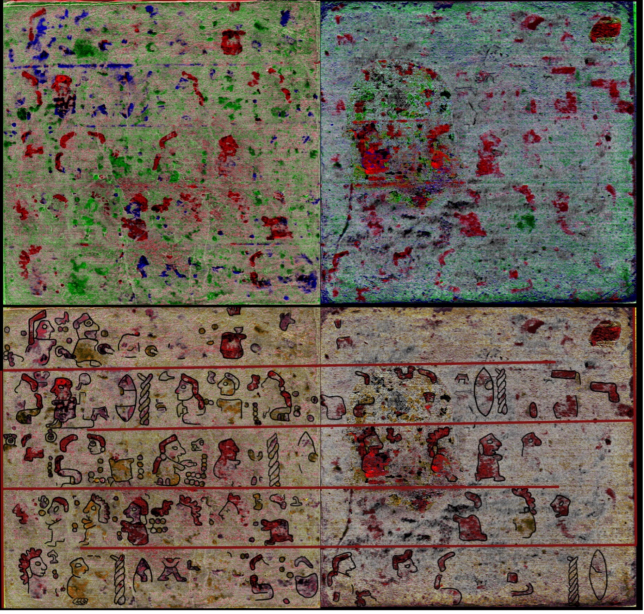Scientists uncover pre-colonial Mexican manuscript hidden for 500 years using high-tech imaging
The codex or book was hidden under a layer of 'plaster and chalk' and was revealed using hyperspectral imaging.

Scientists have uncovered a rare and mysterious pre-colonial Mexican manuscript, which was hidden under a layer of "plaster and chalk" for nearly 500 years. A collaborative effort by researchers at the University of Oxford's Bodleian Libraries and universities in the Netherlands using high-tech imaging helped reveal the ancient codex or book, which was found concealed on the back of a manuscript called Codex Selden.
The scientists used hyperspectral imaging to delve into the Codex Selden, which is housed at the Bodleian Libraries, only to find pictographic scenes depicting early Mexican culture. Codex Selden, which is also known as Codex Añute, dates back to the 1560's and is one of fewer than 20 known Mexican manuscripts to have survived from pre-colonial and early colonial Mexico. Scholars have long speculated that the Codex Selden is a palimpsest – an older document that has been concealed and reused to make the current manuscript visible.
"After four or five years of trying different techniques, we've been able to reveal an abundance of images without damaging this extremely vulnerable item. We can confirm that Codex Selden is indeed a palimpsest," said Ludo Snijders from Leiden University. David Howell from the Bodleian Libraries and Tim Zaman from the University of Delft also collaborated with Snijders on the research.
"What's interesting is that the text we've found doesn't match that of other early Mixtec manuscripts. The genealogy we see appears to be unique, which means it may prove invaluable for the interpretation of archaeological remains from southern Mexico," Snjiders added.
No other technique, previously used by researchers had been able to reveal the "concealed narrative" of the hidden manuscript in a non-invasive manner. The organic paints used to depict the vibrant images generally seen in early Mexican manuscripts, unfortunately, do not absorb x-rays, which effectively rules out the option of using x-ray analysis commonly used to study later works of art.

"The material from which these Mixtec codices were made has so far thwarted all attempts to recover the hidden pictographic texts in a non-invasive manner. The Mixtec codices are made on long strips of leather attached end-to-end to form the substrate of the book," the scientists said in the research paper.
Thanks to intraspectral imaging, researchers were able to uncover over 20 characters, male and female, sitting or standing in the same direction. The manuscript also featured "a prominent individual" who appears periodically in the document and is represented by "a large glyph consisting of a twisted cord and a flint knife". Additionally, the hidden codex unveiled images of people walking with spears and sticks, place signs with glyphs for rivers and women with red hair or headdresses.
The researchers added: "Although there are not many of these codices, this work does not have to be interpreted in complete isolation. For example the characters that are sitting on their knees can, because of conventions recognised in the other books, be understood to be female."
"Hyperspectral imaging has shown great promise in helping us to begin to reconstruct the story of the hidden codex and ultimately to recover new information about Mixtec history and archaeology," said Bodleian Libraries head of Heritage Science, David Howell. "This is very much a new technique, and we've learned valuable lessons about how to use hyperspectral imaging in the future both for this very fragile manuscript and for countless others like it."
The scientists will continue to analyse the remainder of the document, in efforts to reconstruct the entire hidden imagery, so the text can be interpreted more comprehensively. The findings of the research have been published in the Journal of Archaeological Science: Reports.
"The lack of a complete overview of the contents makes it difficult to make statements about the content of this book with certainty. However, what has been recovered thus far suggests that this codex contains information that is at least in part unique. It is hoped that combinations of people, place names or events can be correlated with known Mixtec history. This would allow more in depth reconstruction," the researchers said.
© Copyright IBTimes 2025. All rights reserved.






















